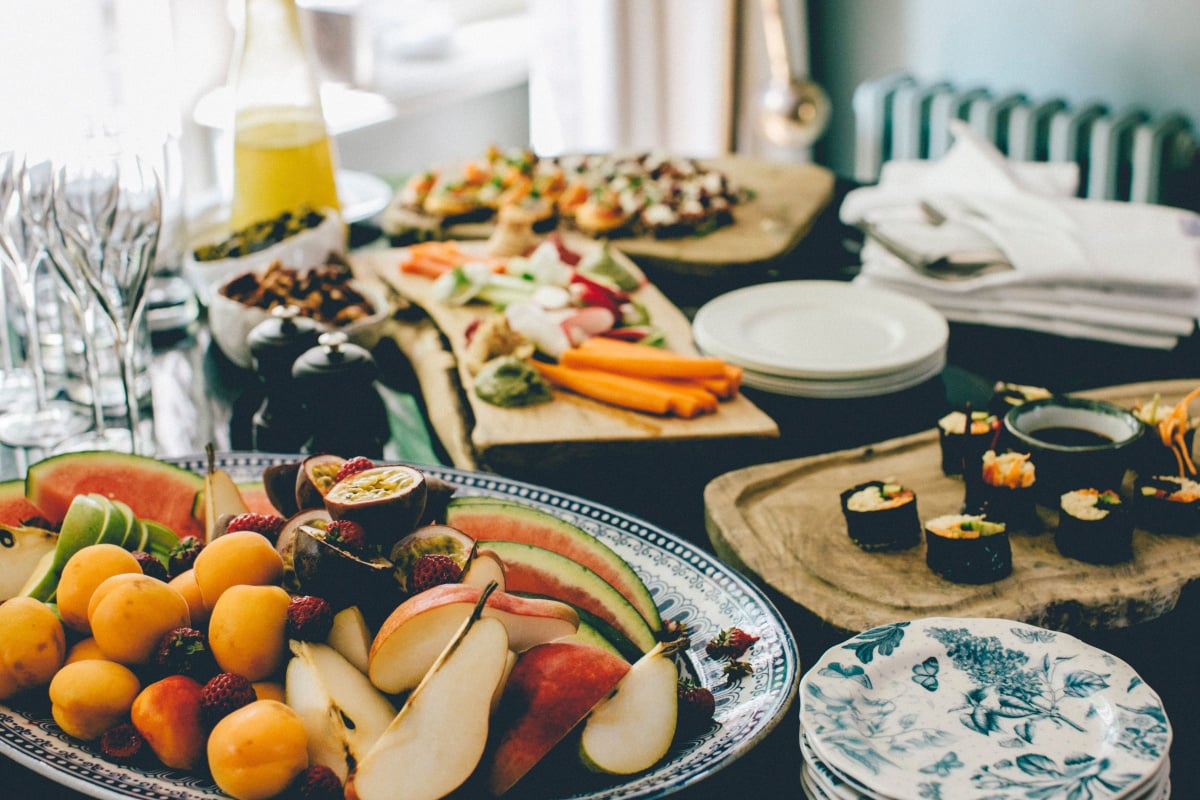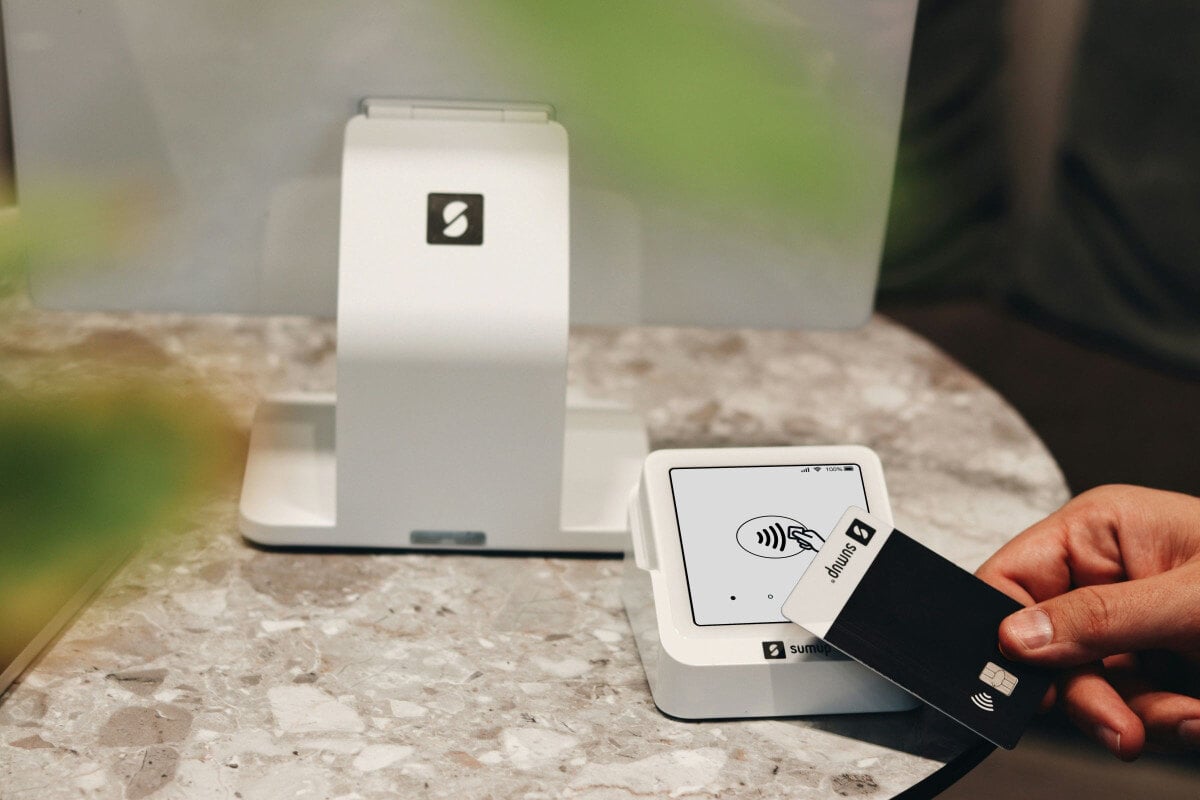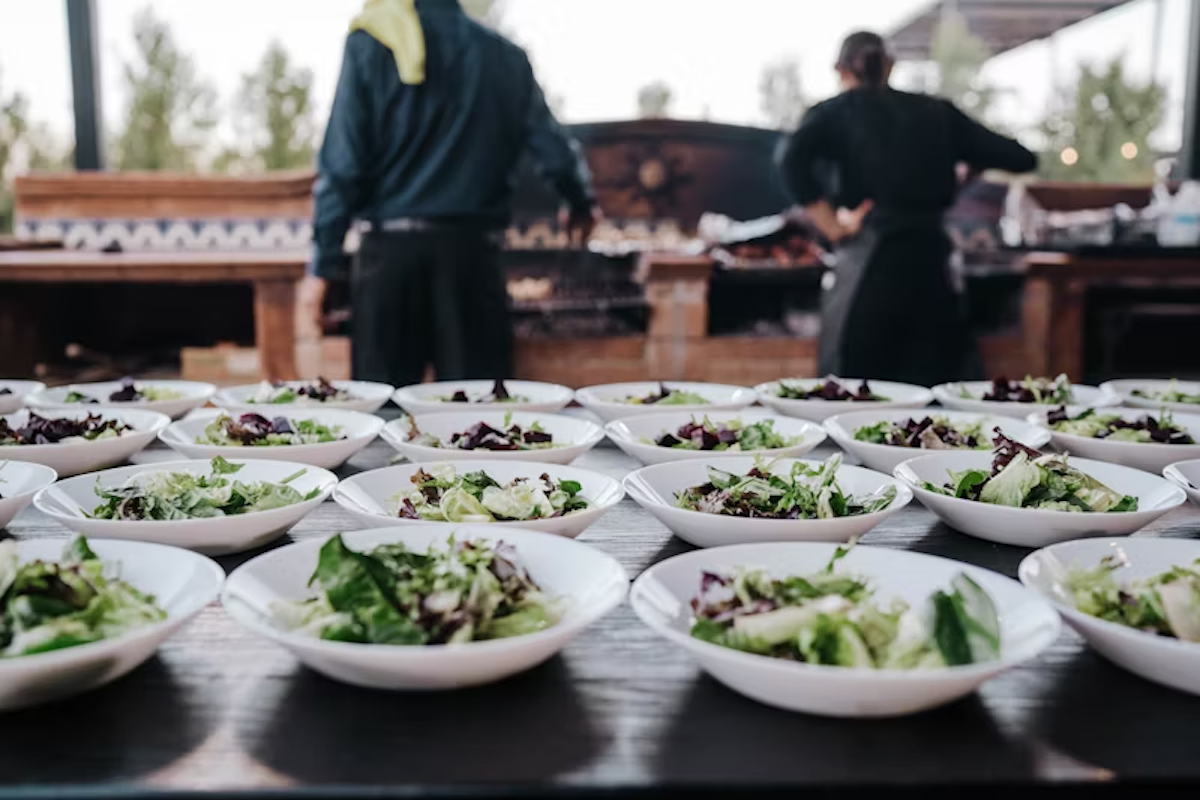14 min read
What You Need to Know About Restaurant Payment Processing
From credit card transactions to mobile payments, the way your customers pay for their meals plays a critical role in your restaurant's daily...
Platform
What is Paytronix Guest Engagement Suite?
Combining online ordering, loyalty, omnichannel messaging, AI insights, and payments in one suite. Paytronix delivers relevant, personal experiences, at scale, that help improve your entire digital marketing funnel by creating amazing frictionless experiences.
A Complete Guest Engagement Suite
Online Ordering
Acquire new customers and capture valuable data with industry leading customization features.
Loyalty
Encourage more visits and higher spend with personalized promotions based on individual activity and preferences.
Catering
Grow your revenue, streamline operations, and expand your audience with a suite of catering tools.
CRM
Build great customer relationships with relevant personal omnichannel campaigns delivered at scale.
Artificial Intelligence
Leverage the most data from the most customer transactions to power 1:1 marketing campaigns and drive revenue.
Payments
Drive brand engagement by providing fast, frictionless guest payments.
Solutions
Paytronix Guest Engagement Solutions
We use data, customer experience expertise, and technology to solve everyday restaurant and convenience store challenges.
FlightPaths are structured Paytronix software onboarding journeys designed to simplify implementation and deliver maximum ROI.
Customer Success Plans (CSPs) are tiered service offerings designed to help you get the most from your Paytronix software, whether you prefer self-guided support or hands-on partnership.
Contactless Experiences
Accommodate your guests' changing preferences by providing safe, efficient service whether dining-in or taking out.
Customer Insights
Collect guest data and analyze behaviors to develop powerful targeted campaigns that produce amazing results.
Marketing Automation
Create and test campaigns across channels and segments to drive loyalty, incremental visits, and additional revenue.
Mobile Experiences
Provide convenient access to your brand, menus and loyalty program to drive retention with a branded or custom app.
Subscriptions
Create a frictionless, fun way to reward your most loyal customers for frequent visits and purchases while normalizing revenues.
Employee Dining
Attract and retain your employees with dollar value or percentage-based incentives and tiered benefits.
Order Experience Builder
Create powerful interactive, and appealing online menus that attract and acquire new customers simply and easily.
Loyalty Programs
High-impact customizable programs that increase spend, visit, and engagement with your brand.
Online Ordering
Maximize first-party digital sales with an exceptional guest experience.
Integrations
Launch your programs with more than 450 existing integrations.
Loyalty Programs
Deliver the same care you do in person with all your digital engagements.
Online Ordering
Drive more first-party orders and make it easy for your crew.
Loyalty Programs
Digital transformations start here - get to know your guests.
Online Ordering
Add a whole new sales channel to grow your business - digital ordering is in your future.
Integrations
We work with your environment - check it out
Tobacco Reporting
Comply with AGDC 2026 DTP Requirements
Company
We are here to help clients build their businesses by delivering amazing experiences for their guests.
Meet The Team
Our exceptional customer engagement innovations are delivered by a team of extraordinary people.
News/Press
A collection of press and media about our innovations, customers, and people.
Events
A schedule of upcoming tradeshows, conferences, and events that we will participate in.
Careers
Support
Paytronix Login
Order & Delivery Login
Resources
Paytronix Resources
Learn how to create great customer experiences with our free eBooks, webinars, articles, case studies, and customer interviews.
FlexPoint Service Catalog
Access FlexPoints are a cost-effective, flexible way to access our value-added services, to ensure you get greater impact from your Access software solution.
See Our Product In Action
E-Books
Learn more about topics important to the restaurant and c-store customer experience.
Reports
See how your brand stacks up against industry benchmarks, analysis, and research.
Blog
Catch up with our team of in-house experts for quick articles to help your business.
Case Studies
Learn how brands have used the Paytronix platform to increase revenue and engage with guests.
Unlock loyalty strategies that 3 out of 4 restaurants use to boost engagement by 40% without adding staff.
6 min read
Oct 15, 2024

Whether you specialize in weddings, food trucks, or traditional catering, managing your catering food costs is crucial for keeping your business profitable. Creating a successful catering business plan while ensuring your pricing is competitive and controlling your costs is critical to staying ahead of the competition and maintaining a balanced catering budget.
We’ve put together this article to help you calculate catering food costs, reduce expenses, and increase profitability. Stay with us to discover actionable tips to streamline your operations and keep your business on the path to success!
Before diving into cost optimization, it’s important to have a solid understanding of baseline catering costs. This concept includes both direct food costs (such as the ingredients) and indirect expenses (like transportation, labor, and packaging). Knowing how these factors affect traditional catering costs can help you price your services appropriately.
For traditional and food truck catering, food costs usually represent about 25-35% of your total revenue per event. You’ll want to keep this in mind when setting your catering package prices.
Accurately calculating your costs (including your loyalty program costs, once you launch one) will help you develop a pricing structure that ensures profitability, whether you provide drop-off catering, full-service catering, or specialized services like a custom menu bar service.
Running a successful catering business is more than just providing top-notch food—it’s about controlling your catering costs to ensure each event is profitable.
Optimizing your catering service starts with a deep understanding of your expenses, particularly your average catering costs per event. A solid catering business plan is critical to long-term success.
By analyzing the factors that directly impact your costs—including ingredients, labor, and waste—you can maintain profitability while delivering top-notch service. Here are seven proven tips to help you achieve that:
The first and most critical step is accurate recipe costing. This means breaking down each dish to account for every ingredient—right down to the spices and garnishes.
For example, if you're catering a wedding, you need to know exactly how much each dish costs to prepare. Consider a large event where you're serving 200 people. A dish that costs $5 per serving for 200 guests adds up quickly ($1,000 for the base cost), and minor inaccuracies or discrepancies in ingredient costs cause significant impact on your pricing and profits.
Using tools like recipe costing software can make this process easier and provide a clear pricing structure. Tools like Recipe Costing and reciProfity may assist you in setting up your complete pricing guide and tracking ingredient costs accurately.
Buying in bulk is one of the easiest ways to cut down on costs. If you're running a food truck, where you often need to buy ingredients daily, consider negotiating with suppliers for a bulk discount.
Bulk purchasing becomes even more crucial for larger events, such as corporate events, where buying non-perishable items in larger quantities reduces your average catering cost. The economies of scale in bulk buying are well worth the effort, especially for frequently used items like rice, pasta, and oils.
Designing your menu around what's local and in-season is a simple but effective way to cut down on costs. Seasonal ingredients not only reduce your expenses but also allow you to offer fresher, higher-quality dishes.
Plus, seasonal menus can be marketed as a premium service, appealing to clients looking for fresh, local, and sustainable options. Additionally, this approach makes it easier to accommodate dietary restrictions, such as vegan or gluten-free menus, with fresh, locally sourced produce.
Waste eats away at your profits faster than you might realize. Implementing portion control, especially in buffet-style settings, can drastically reduce waste. For example, using software that tracks guest preferences and past orders, you can adjust portion sizes and save thousands of dollars annually.
Another strategy is proper storage. If you're preparing for a wedding with 300 guests, ensuring that all perishables are stored correctly could prevent unnecessary spoilage, helping you keep your catering costs in check.
Don’t let supplier relationships stagnate—make it a point to review your supplier contracts periodically, like quarterly or biannually. This helps you get the best prices for your ingredients, especially as market prices fluctuate. You might find that switching to a different local supplier for certain ingredients can reduce costs without sacrificing quality.
For larger catering companies, periodically reviewing and renegotiating supplier contracts is crucial for keeping your food prices competitive. It’s worth the effort to shop around and ensure you're getting the best deal.
A streamlined menu is a cost-efficient menu. Offering fewer dishes reduces the variety of ingredients you need to stock, which, in turn, helps you manage inventory more efficiently. A study from Aaron Allen & Associates revealed that by reducing the number of menu items, restaurants can reduce their inventory costs by 10-15%.
Many caterers now focus on dishes that use overlapping ingredients to make operations more efficient. Pam Schwartz, co-founder and general manager of Ranch 45 in Solana Beach, CA, emphasizes the importance of "cross-utilizing" ingredients across different times of day. For example, she uses scraps from the New York Strip and beef tenderloin to make lasagna with meat sauce, effectively reducing waste and maximizing ingredient usage.
Modern inventory management systems are essential for tracking food costs and reducing waste. These systems give you real-time inventory visibility, ensuring you're not over-purchasing or wasting food. By integrating these tools with online ordering systems, you can further simplify stock management and ensure you’re staying within your catering budget.
If your business provides drop-off catering services, having clear insights into inventory minimizes over-preparation and keeps costs down.
To calculate catering costs, follow these simple steps:
For example, if a dish costs $300 to prepare for 50 people, your per-person cost is $6. Charging $30 per person gives you an 80% catering cost margin. Use this formula for both traditional catering and food truck catering costs, as well.
Using historical data is essential for understanding how various factors affect catering costs over time. By analyzing trends from past events, you can identify patterns, such as higher costs during certain seasons or fluctuations in ingredient prices.
For example, if your wedding catering cost increases due to seasonal ingredients, adjust your menu by offering alternatives that are in season. This will reduce expenses without compromising on quality.
Additionally, customer feedback provides valuable insights. Tracking what dishes are most popular can help you focus on high-margin items. At the same time, the reviews you get may reveal preferences for portion sizes or dietary restrictions that can be addressed for future events.
Real-life examples of caterers successfully managing and reducing their food costs can provide valuable insights and inspiration. Let's look at a few success stories and the lessons we can learn from them.
Samantha's, a local food service company in Boston, faced a challenge when its food costs climbed from 36.5% to 37.1% over six months, resulting in a $10,000 profit loss. Through careful analysis, they discovered that cooks were serving portions up to 11% larger than recipes dictated. By implementing strict portion control measures, they were able to reduce their food costs to 35.5%, significantly improving their bottom line.
Key Takeaway: Accurate portioning is crucial. Even small overages can add up to significant losses over time.
Caiger & Co, a catering company in London, developed a unique solution to minimize food waste by introducing a line of "Conscious Canapés." These snacks were created using surplus ingredients that would otherwise go to waste.
Over six months, this initiative prevented almost 20 kg (about 44 pounds) of high-quality ingredients from being discarded. Not only did Caiger & Co reduce its food costs, but it also gained recognition as a leader in sustainability, significantly boosting its brand image.
Key Takeaway: Repurposing surplus ingredients can reduce waste, provide new revenue streams, and improve your brand's reputation.
A global review of 86 catering sites across six countries found that nearly all sites saw positive returns after implementing food waste reduction programs. On average, these sites achieved a 36% reduction in food waste within the first year.
Additionally, 64% of the sites were able to recoup their investments within that time frame, demonstrating a watertight business case for reducing food waste.
Key Takeaway: Tracking and reducing food waste benefits the environment and contributes to a significant financial return for catering businesses.
Successfully managing your catering food costs requires a balance of careful planning, accurate catering cost calculation, and smart operational strategies. By implementing the insights offered in this article—such as bulk purchasing, waste reduction, and seasonal menu planning—you’ll be able to maintain competitive catering prices while maximizing profitability.
Want to learn more about optimizing your catering business? Download our free eBook on maximizing online ordering, or book a demo with one of our experts to see how Paytronix can help streamline your operations and reduce your catering costs.

14 min read
From credit card transactions to mobile payments, the way your customers pay for their meals plays a critical role in your restaurant's daily...

10 min read
Combining a digital restaurant ordering system and a loyalty program is not just about consolidating your tech stack for easier operations. It's...

14 min read
Are you a catering genius or someone who is just now dipping your toes in the event catering world? We’ve got tips to help bring your A-game to the...